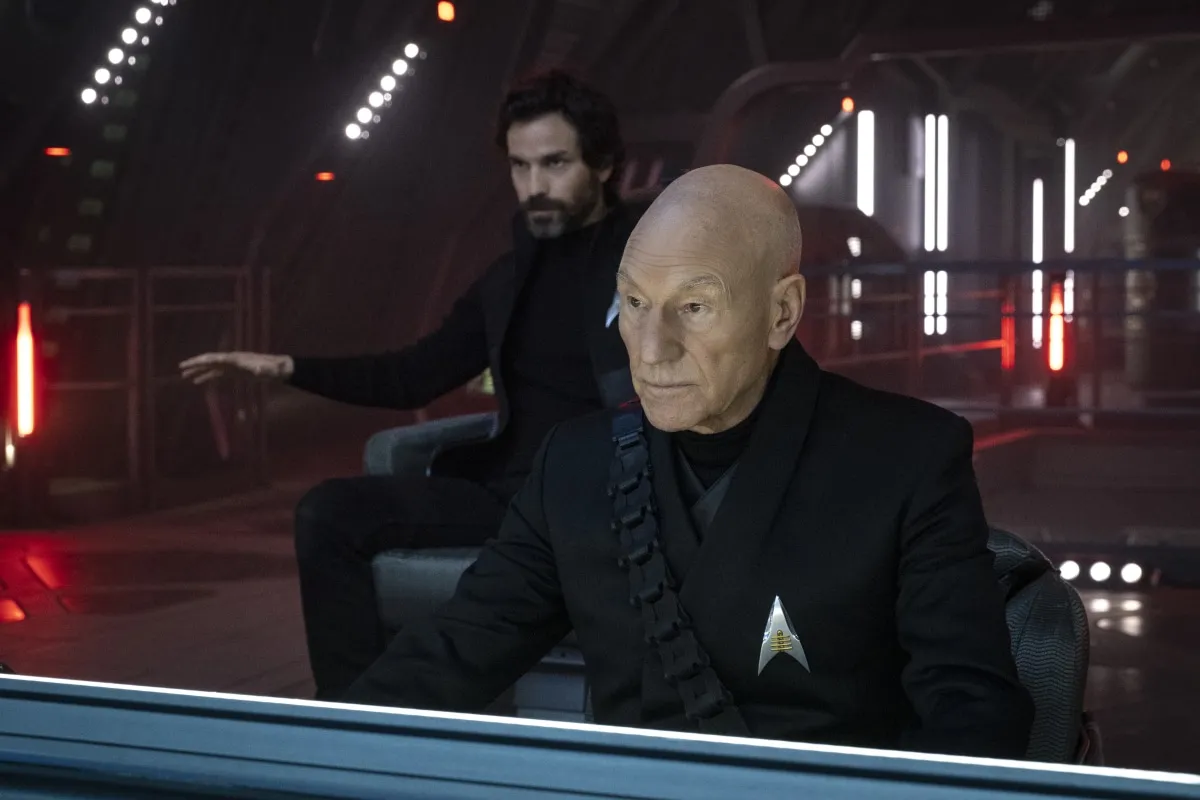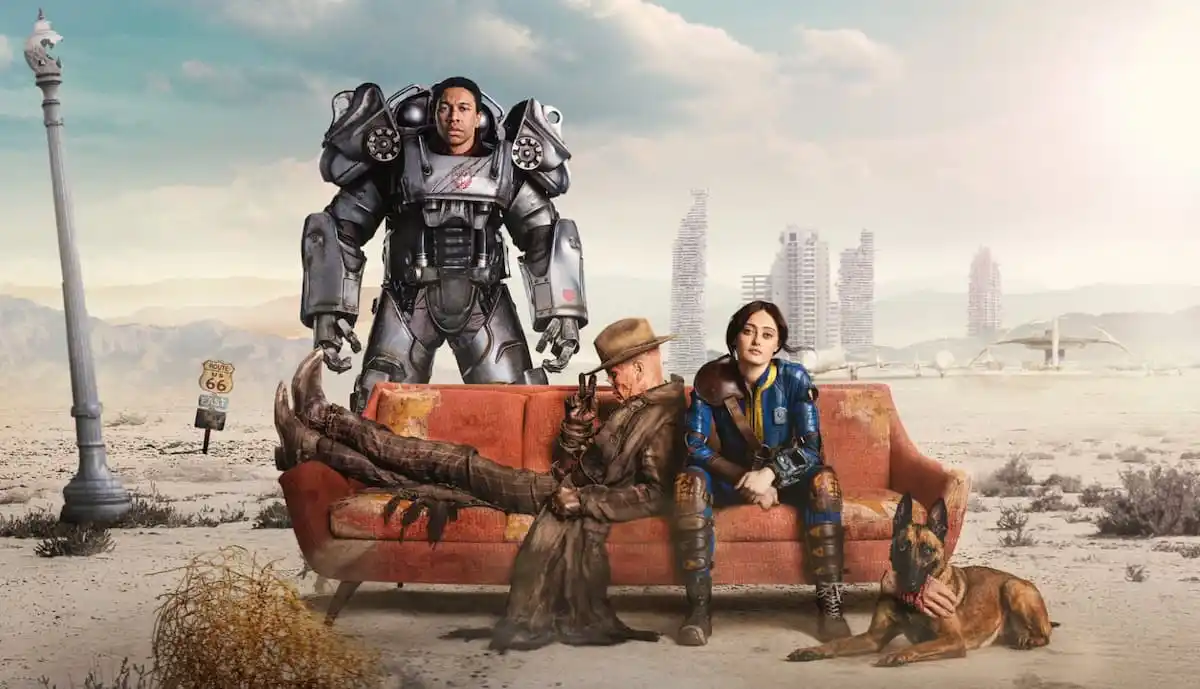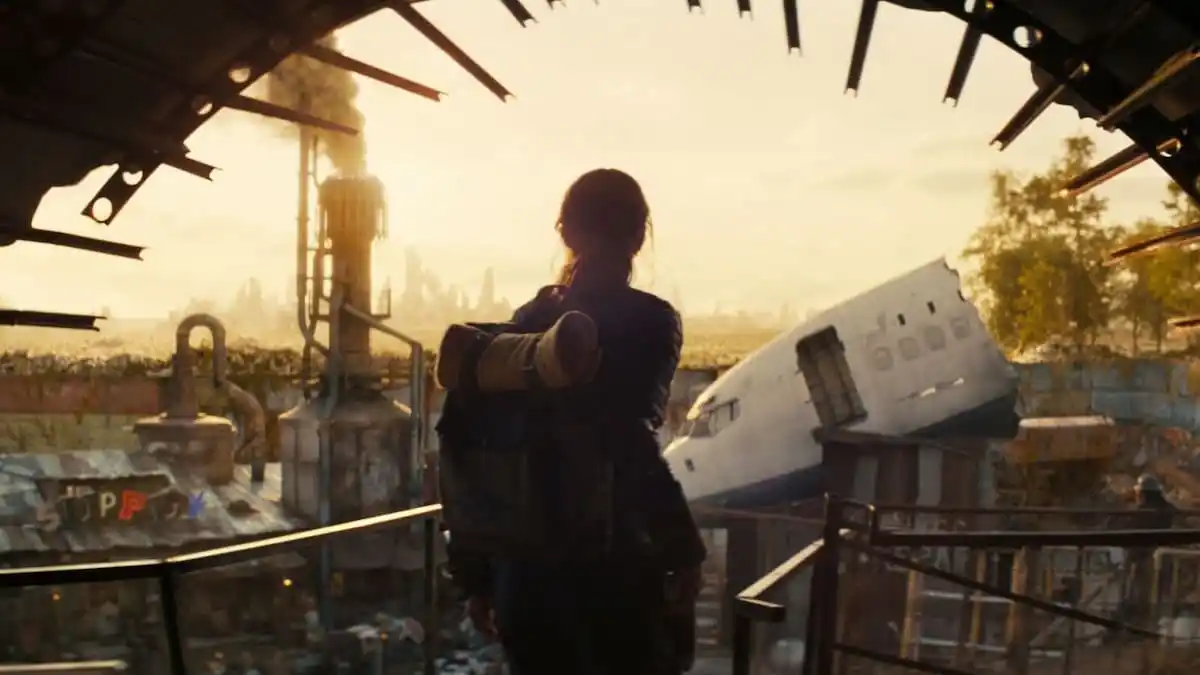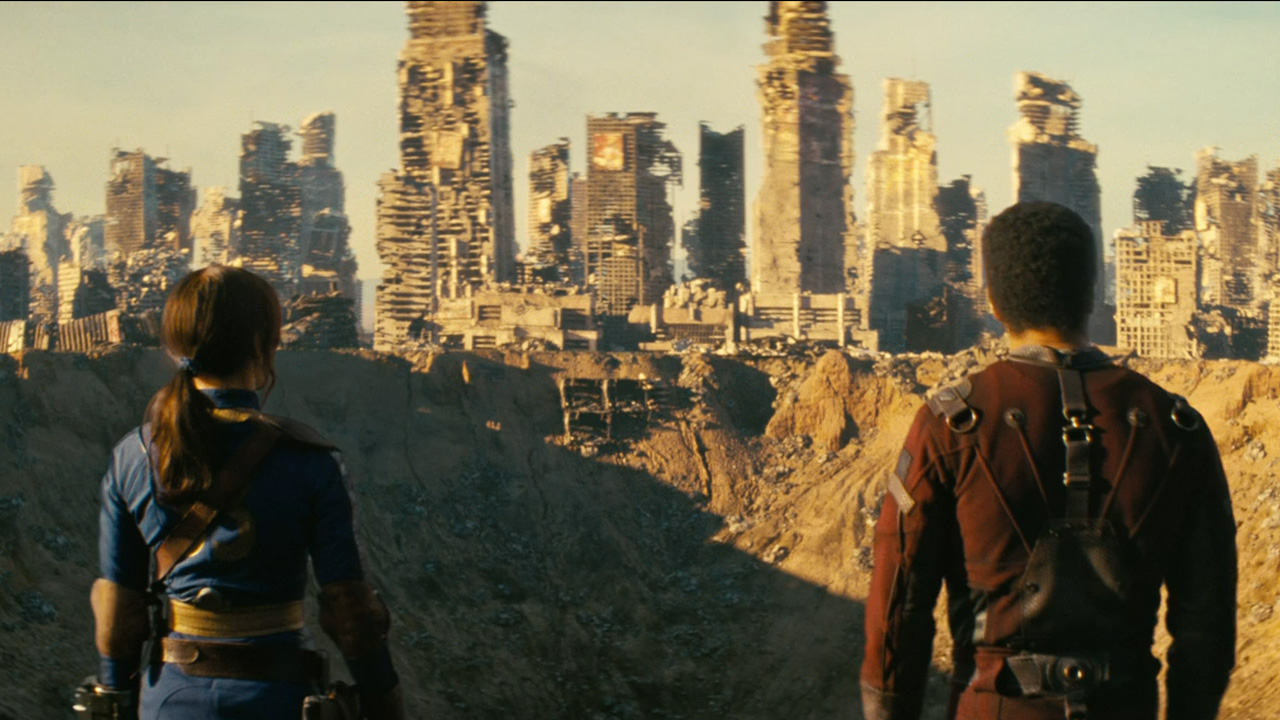This discussion and review contains some spoilers for Star Trek: Picard season 2, episode 3, “Assimilation.”
In some ways, “Assimilation” marks a point of intersection between the previous two episodes of Star Trek: Picard season 2, “The Star Gazer” and “Penance.” Like “The Star Gazer,” there is an overt nostalgia running through this episode, particularly for the film Star Trek: First Contact. Like “Penance,” “Assimilation” embraces a familiar Star Trek trope in a way that feels novel for this iteration of the franchise. The result is an installment that feels like a hybrid: an episode with big and interesting ideas tempered in execution.
“Assimilation” finds the cast thrown back in time to a version of Earth that is roughly contemporaneous. Like the dark alternate universe in “Penance,” it is a tried-and-tested Star Trek premise, dating back to the first season of the original show. “Tomorrow Is Yesterday” found James T. Kirk (William Shatner) and the crew of the Enterprise slingshotting around the sun, thrown back like the characters in “Assimilation” to a world just two years ahead of the episode’s air date.
For the first three decades of the Star Trek franchise, this was a reliable storytelling model. Perhaps the most celebrated example was Star Trek IV: The Voyage Home, in which the crew traveled to 1986 to literally save the whales. The influence of The Voyage Home is keenly felt on “Assimilation,” from its grappling with a timely contemporary theme (immigration rather than environmentalism) to a plot beat that has Rios (Santiago Cabrera) hospitalized, like Chekov (Walter Koenig) in the film.
Perhaps owing to the success of The Voyage Home, these stories were popular in the 1990s. On The Next Generation, the crew followed Data (Brent Spiner) back to 19th century San Francisco in “Time’s Arrow.” On Deep Space Nine, Sisko (Avery Brooks), Dax (Terry Farrell), and Bashir (Alexander Siddig) confronted homelessness in 21st century San Francisco in “Past Tense,” an adventure retroactively recognized as a franchise classic. On Voyager, the crew visited Los Angeles in 1996 in “Future’s End.”

These sorts of adventures became less common as the franchise reached its 30th anniversary. Star Trek: First Contact, which seems to be a touchstone for the second season of Picard based on the opening of “The Star Gazer,” marked a point of transition. The second feature film starring the cast of The Next Generation essentially blended the plots of The Wrath of Khan and The Voyage Home, sending the Enterprise back to the 21st century as Picard (Patrick Stewart) faced an old enemy.
Notably, First Contact established a clear hierarchy between these two films. The fish-out-of-water time travel narrative from The Voyage Home was firmly positioned as the movie’s secondary plot. Instead, the primary storyline followed the template established by The Wrath of Khan, with Picard confronting the Borg in a grim and militaristic adventure. It was a bold statement of intent, signaling that Star Trek would be moving away from wacky time travel adventures like The Voyage Home.
In the years that followed First Contact, the Star Trek shows drew more heavily from The Wrath of Khan in stories like “For the Uniform,” “Doctor Bashir, I Presume,” “Year of Hell,” “Bliss,” “Equinox,” the “Augments” trilogy, the “Affliction” two-parter, Star Trek: Nemesis, J. J. Abrams’ Star Trek reboot, and (of course) Star Trek Into Darkness. There were still time travel stories — like “Carpenter Street” — but they were no longer big multipart event stories or feature films.
This is what makes “Assimilation” so interesting. It feels like the mirror image of “Penance,” which was essentially about confronting Jean-Luc Picard with a familiar Star Trek story template that The Next Generation had never really explored: the idea of a universe in which Starfleet and the Federation were perverted into something monstrous. In contrast, “Assimilation” marks an attempt to apply a very old-fashioned type of Star Trek story to the modern iteration of the franchise.

“Assimilation” is cannily aware of all these dynamics at play. Once again, Picard travels back in time. Once again, an away team tries to fix history, while Picard remains on the ship and deals with the Borg Queen (Annie Wersching). However, part of what is interesting about “Assimilation” is that the episode largely inverts the hierarchy established by First Contact.
There are three plot strands in “Assimilation.” Two take place on Earth in 2024, as Seven (Jeri Ryan) and Raffi (Michelle Hurd) try to find the point of divergence while Rios ends up at a clinic for illegal immigrants. As such, two-thirds of the episode focus on the time travel element. Indeed, keeping Picard on the ship feels like a (smart) production decision as much as a narrative choice, an attempt to minimize the risk of exposing the octogenarian star to coronavirus by keeping him on a closed set.
The plot thread focusing on Picard and the Borg Queen in “Assimilation” is underplayed compared to the action that drove First Contact. Part of this is likely down to the fact that Patrick Stewart is more than a quarter of a century older than he was in 1996, limiting the actor’s potential to engage in dune buggy joyrides. However, the subplot is a chamber piece compared to a lot of modern Star Trek, even declining to visualize the battle of wills between the Borg Queen and Jurati (Alison Pill).
These choices together suggest an inverted take on First Contact, a version that prioritizes the time travel hijinks of The Voyage Home over the returning antagonist thread of The Wrath of Khan. Much more than the continuity in-jokes and allusions in “The Star Gazer,” this structural choice in “Assimilation” feels like a conscious and concerted effort to reconnect Picard (and possibly the larger modern iteration of Star Trek) with its franchise roots by embracing an older narrative template. To quote the Borg Queen, perhaps the franchise must “go backwards to go forwards.”

This doesn’t feel like fan service so much as what might be described as “general audience service.” After all, The Voyage Home is arguably the most popular Star Trek film among wider audiences, being the only Star Trek film (and only the fourth film ever) to earn an A+ CinemaScore. The film was the fifth highest-grossing film of 1986 and contributed to a phenomenal year for Paramount Pictures, in which the studio pulled in twice as much as its nearest competitor.
There is an undeniable sense of populism at play in “Assimilation.” The crew’s trip back to 2024 Los Angeles is established with an almost legally mandated use of a cover of “California Dreamin’” to demonstrate a nostalgic invocation of the West Coast. There are other concessions to pop culture. When Seven materializes, a young girl asks, “Are you a superhero?” It seems appropriate that the crew have been tasked with finding “the Watcher.” This seems like Star Trek for general audiences.
To the episode’s credit, “Assimilation” manages to provide a strong thematic tether back to Picard’s core interests. It makes sense that Rios should find himself in the middle of an immigration raid in 21st century Los Angeles, essentially rendering the show’s subtext around the Romulan immigrants and refugees as part of the text. Immigration and xenophobia has always been a central preoccupation for Picard, even if the metaphor could occasionally get a bit muddled.
Indeed, there’s something effective in juxtaposing the Confederation’s human supremacist exploitation of immigrant labor in “Penance” with the real-world events that clearly inspired it in “Assimilation.” As with the incarceration of the two darker-skinned members of the Deep Space Nine cast in “Past Tense,” the imprisonment of Rios in “Assimilation” provides a stark reminder that the allegories driving the franchise are more than simple abstractions; they reflect the modern world.

For all the show’s flaws, it is commendable to see Star Trek: Picard grapple with immigration so explicitly, particularly in the context of California. In some ways, it feels like a corrective for the paranoia that Voyager demonstrated over migrants in episodes like “Displaced” and refugees in episodes like “Day of Honor” — a position that very much reflected California’s politics of the era, which would arguably ripple outwards and become the national politics to which Picard is now responding.
It’s also possible to argue that the invocation of immigration raids and detainment in “Assimilation” serves to temper some of the muddier metaphors of the first season of Star Trek: Picard, where the show tried to argue that Romulan refugees were innocent migrants while also indulging in a pulpy paranoid xenophobic fantasy where they were also part of a vast and sinister conspiracy to corrupt and subvert the Federation from the inside. If nothing else, “Assimilation” is a lot clearer in its worldview.
To be fair, “Assimilation” feels very much like setup. The episode is largely moving pieces around the board. This is another way in which it feels like a counterbalance to “Penance,” which was a much faster episode that probably could have used more room to breathe. It seems likely that the crew will be spending a considerable chunk of the season in the Los Angeles of 2024. “Assimilation” does a lot of table-setting, although the proof will likely be in the pudding.





